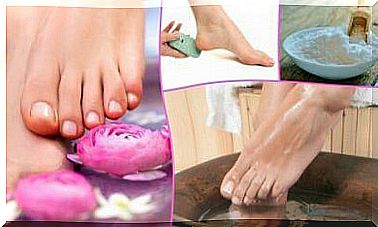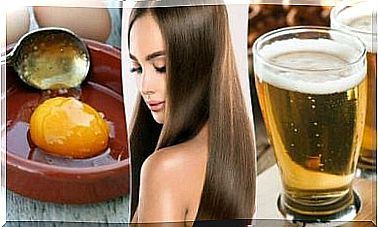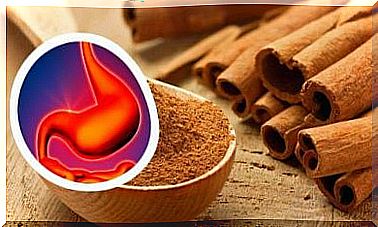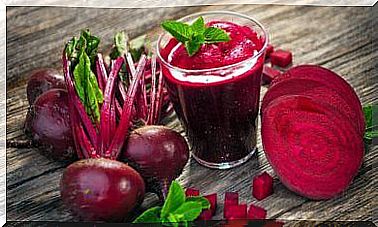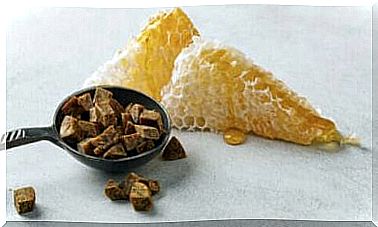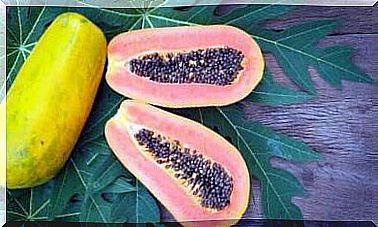Lanolin: What Is It And How It Can Be Used
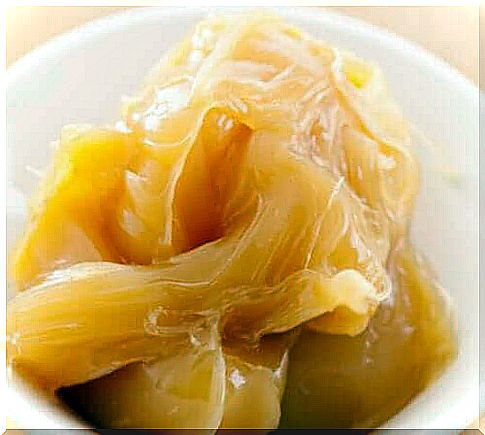
The sebaceous glands of wool-producing mammals, especially sheep, secrete a wax capable of impregnating and protecting the skin from moisture. Lanolin, or this natural wax, is obtained during wool shearing, as it also prevents damage to the animal’s skin during this operation.
Often considered animal fat, lanolin is an odorless, yellowish substance with a consistency similar to petroleum jelly. Despite its various applications, it is particularly distinguished by its moisturizing and softening properties.
Therefore, it is often used to treat skin conditions such as eczema. In this article you will discover everything you need to know about wool wax.
What is lanolin for?
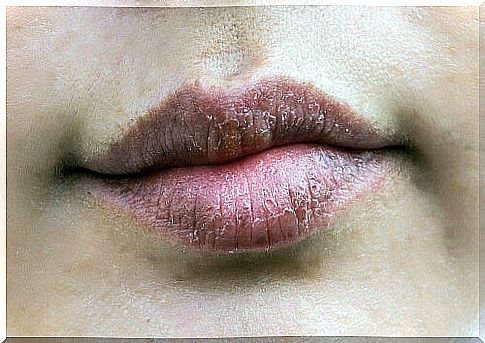
Known for its moisturizing effect, lanolin is a hypoallergenic wax with bacteriostatic effect. In other words, although it cannot kill bacteria, it inhibits them from reproducing, so they age and die leaving no offspring.
In addition, lanolin acts as an emollient, a substance that can reduce calluses and calluses, soften and protect the skin, and fight blemishes.
For this reason, lanolin is often used in various fields such as the pharmaceutical and cosmetics industries. Most often, it is usually used to make the following products:
- Creams for medical and cosmetic use (including moisturizing, make-up removal, shaving, anti-aging, diaper dermatitis).
- Makeup products such as lipsticks, face powders and more.
- Products and remedies to reduce scalp dryness.
- Soaps and detergents.
- Leather polishes or shoe creams.
- In the production of vitamin D.
The benefits of lanolin for our skin
As we have seen, lanolin is a famous emollient that can heal dry and dehydrated skin. A study published in Clinical Medicine & Research found that it is able to reduce skin water loss by 20 to 30%. As a result, it can moisturize, soften and improve the appearance of rough and flaky parts of the epidermis.
But these are not the only benefits that this natural wax offers to the dermis. Let’s take a closer look at how else it can help us.
It reduces wrinkles
Both lanolin oil and lanolin alcohol are widely used ingredients in anti-aging creams. They are believed to be effective in reducing both deep wrinkles and fine expression lines.
Unfortunately, there is little scientifically proven evidence. However, these effects are related to the fact that the lanolin molecule can contain twice its weight in water, which is expected to increase the volume of the skin and fight the signs of aging.
Lanolin reduces hair dryness
Due to its softening effect that prevents water loss, lanolin oil is commonly used in the care of dry hair. It should always be applied to damp or wet hair because when it dries dry, there is no moisture that lanolin can hold.
In addition, due to the waxy consistency of this oil, you need to wash your hair with deep cleansing shampoo or apple cider vinegar after application so that no traces of the product remain.
Lanolin heals dry lips
As with dry skin and hair, lanolin oil helps treat dryness and chapped lips. According to a study published in the Journal Applied Oral Science , lanolin cream was effective in reducing dry mouth in people undergoing chemotherapy.
Similarly, it is known that this wax can penetrate the deeper layers of the lips better than other substances that only reach the outer barrier. It is also believed that it can be safely used even in newborns with this problem on the mouth.
However, before using the product with lanolin in infants, it is recommended to consult a pediatrician just in case.
Heals cracked nipples
Cracked nipples are a common problem for women while breastfeeding. For this reason, some specialists recommend applying lanolin to the affected areas on the breasts to relieve pain and stop bleeding.
This natural wax is believed to be able to restore proper hydration to the nipples. Therefore, breastfeeding women should buy 100% pure and refined lanolin. They should be extremely careful when doing so, as unpurified lanolin can cause allergic reactions in infants.

Other benefits of lanolin for the skin
Lanolin can help with skin care in other ways. Note the following uses:
- Softening rough skin on the elbows and heels : Dry skin makes areas such as the heels and elbows rough and leads to a build-up of dead cells. Therefore, it is recommended to use lanolin in order to soften these callous areas and remove dead epidermis.
- Treating diaper rash – Moisture from diapers can cause skin irritation and inflammation in babies. Fortunately, lanolin serves as a buffer to separate moisture from babies’ skin.
- Heals minor burns: Lanolin is also used to soothe and heal wounds caused by fire and heat.
- Improves Wound Healing: Lanolin has healing properties, so it is believed that it can accelerate the healing of wounds and cuts.
Where can you find it?
Thanks to its properties and health benefits, lanolin is available in many sold products. They include, but are not limited to:
- Pure lanolin (if good quality, no more than 0.25% water).
- Lanolin oil.
- Lanolin alcohol.
- Creams for medical and cosmetic use (including anti-aging, moisturizing, for babies, for use on the nipples).
- Cosmetic products (including lip balms, masks, make-up removal products).
- Soaps, shampoos, conditioners and detergents.
Prevention and contraindications
People without allergies can safely consume lanolin and also apply it topically. However, consuming large amounts of this wax, which is used to make vitamin D, is harmful. It can be toxic and tends to accumulate in the intestines.
Overall, lanolin can cause allergies and poisoning. Find out what any possible side effects look like before you start taking it.
Allergy to lanolin
Since lanolin is the main cause of wool allergy, people with this condition should avoid it. This wax is also a skin sensitiser. This means that this substance may cause an allergic reaction in contact with the dermis.
However, lanolin allergies are extremely rare. According to a study published in the British Journal of Dermatology , only 1.7% of 25,000 allergy-prone people had symptoms of this particular allergy. The most common symptoms of an allergic reaction include swelling of the eyes, mouth and throat, rash and difficulty breathing.
Lanolin poisoning
Lanolin poisoning can occur in many ways. Regardless of whether the oil is swallowed by mistake or used as a lip balm, excess amounts are swallowed when licking the lips. Symptoms of poisoning include diarrhea, vomiting, rash, inflammation and reddening of the skin.
What should you remember about lanolin?
Lanolin is a natural wax that is obtained from animals that produce wool. It is produced by the sebaceous glands of these mammals and is used to protect the wool from moisture and also to prevent injuries during clipping.
It is typically used in products for medical and cosmetic use, such as creams, shampoos, soaps, and detergents. Likewise, it is an ingredient in leather polishes and shoe creams.
Its advantages relate mainly to health applications and skin care. Lanolin is believed to reduce wrinkles, heal dry lips, heal cracked nipples, and reduce dry hair and scalp.
On the other hand, it cannot be used by people allergic to wool, because it can cause a number of allergic symptoms. Similarly, its consumption should be avoided as it may cause poisoning in excessive amounts.


